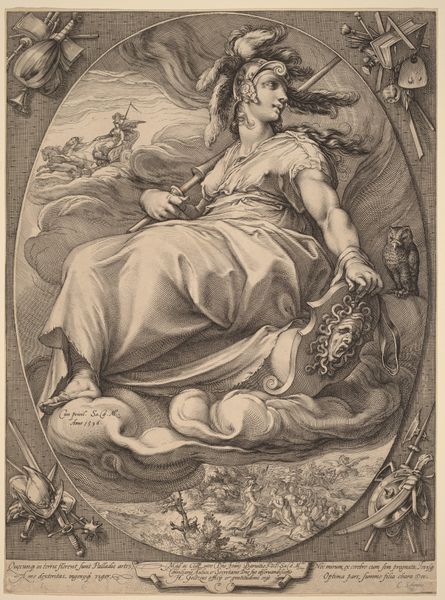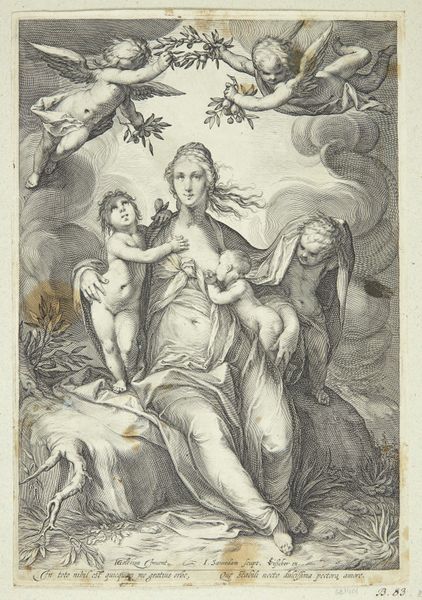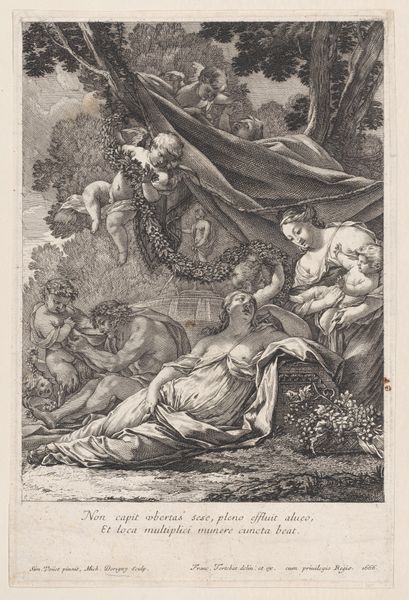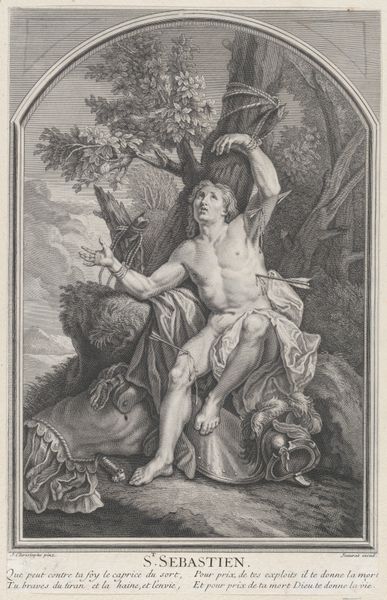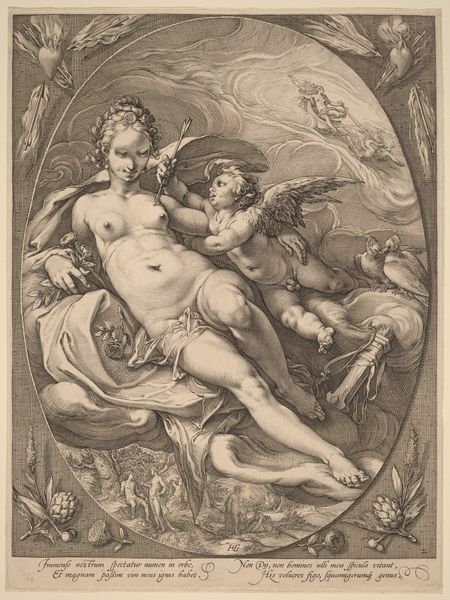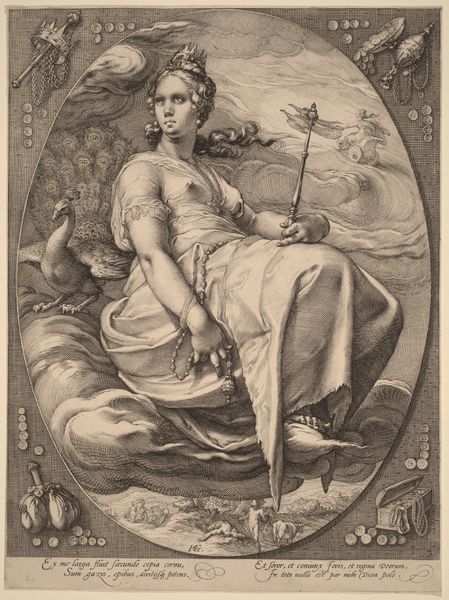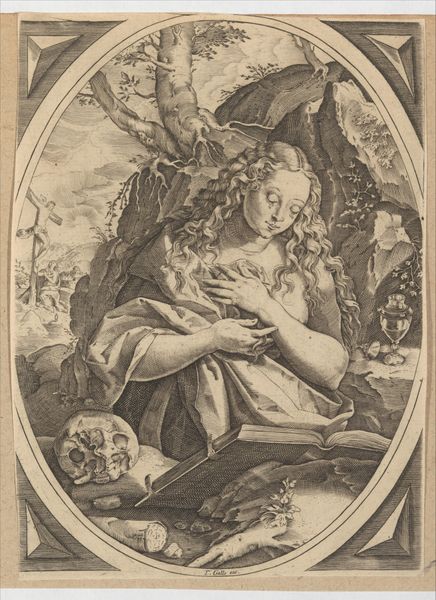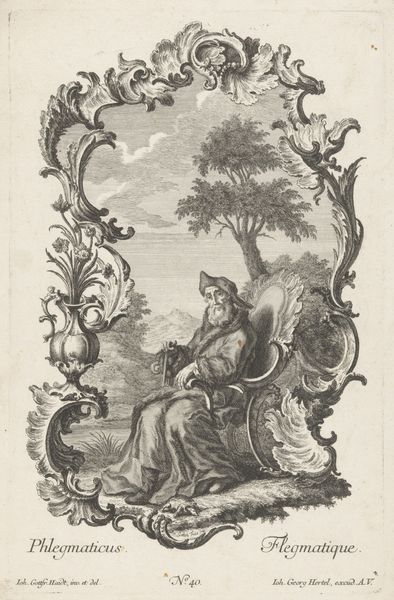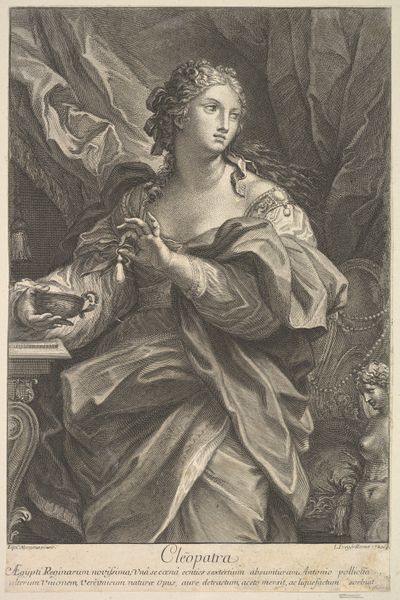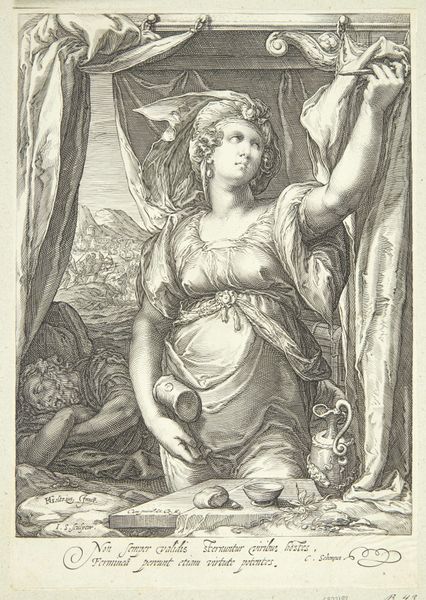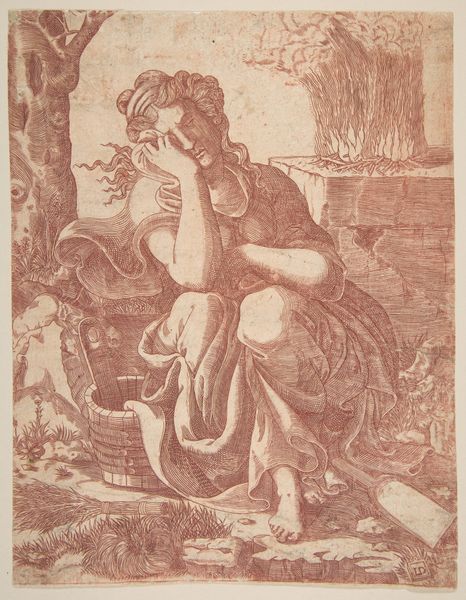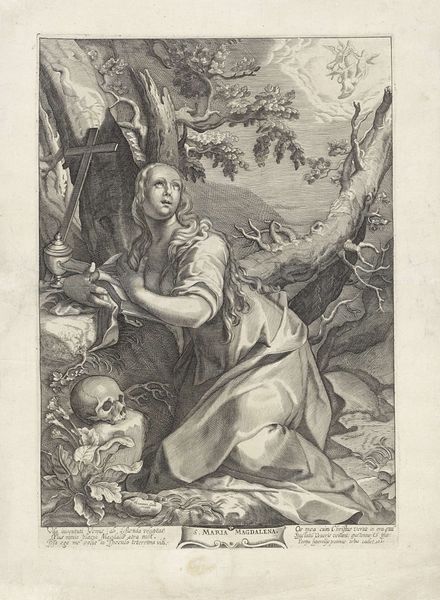
print, engraving
#
baroque
# print
#
figuration
#
pencil drawing
#
history-painting
#
engraving
Dimensions: 301 mm (height) x 207 mm (width) (plademaal)
This print, called "Håb," or "Hope" in English, was made by Jan Saenredam around the turn of the 17th century, using an engraving technique. The magic of engraving lies in its capacity to create images from simple lines. Look closely, and you'll notice that the entire scene is created through a network of etched marks on a metal plate. To make this, the artist would have used a tool called a burin to manually carve lines into a copper plate, a labor-intensive process that requires a high degree of skill. Ink is then applied to the plate, and the surface is wiped clean, leaving ink only in the incised lines. Finally, paper is pressed against the plate, transferring the image. The resulting print has a crisp, precise quality, ideal for conveying complex allegorical scenes like this one. Notice how the dense cross-hatching creates areas of deep shadow, while the delicate lines suggest the soft textures of skin and fabric. By understanding the labor and skill involved in engraving, we can better appreciate the artistry and meaning embedded in this seemingly simple print. It's a reminder that even the most ethereal concepts, like hope, are grounded in the material world and the work of human hands.
Comments
No comments
Be the first to comment and join the conversation on the ultimate creative platform.
